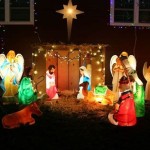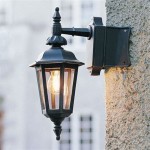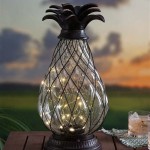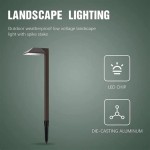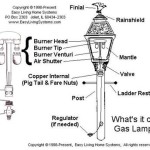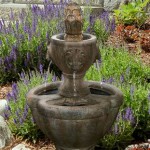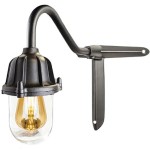What Is The Best Material For An Outdoor Banner?
Selecting the optimal material for an outdoor banner is a crucial decision that impacts its longevity, visual appeal, and overall effectiveness. The outdoor environment presents a range of challenges, including varying weather conditions, exposure to ultraviolet (UV) radiation, and potential physical damage. Therefore, understanding the properties of different banner materials and their suitability for outdoor use is essential for achieving the desired results and maximizing the return on investment.
The "best" material is not a universal answer; it depends entirely on the specific application, budget, and environmental factors. However, certain materials consistently prove to be more durable and perform better in outdoor settings. This article will explore the most common and effective materials used for outdoor banners, highlighting their strengths and weaknesses to assist in making an informed choice.
Understanding the Key Considerations for Outdoor Banner Materials
Before delving into specific materials, it's important to establish the key factors that influence the performance of an outdoor banner. These considerations will help to narrow down the options and determine which material best suits the intended application. These considerations should include durability, weather resistance, print quality and cost effectiveness.
Durability: This refers to the material's ability to withstand tearing, stretching, abrasion, and impact. A durable material will maintain its structural integrity and appearance over time, even under harsh conditions.
Weather Resistance: Outdoor banners are constantly exposed to the elements, including rain, wind, sunlight, and temperature fluctuations. The material must be resistant to fading, cracking, and warping due to these factors.
Print Quality: The material should be compatible with various printing methods and capable of displaying vibrant colors and sharp images. High-quality printing ensures that the banner effectively communicates the intended message.
Cost-Effectiveness: The material's cost must be balanced against its performance and longevity. While a more expensive material may offer superior durability, it may not be necessary for short-term applications. A higher initial cost can often translate to lower replacement costs in the long run, therefore, a careful consideration is required. This should be viewed as a long term investment considering the number of times the banner may have need replacement.
Other factors to consider include the environmental impact of the material, its weight (especially for large banners), and its ease of installation and maintenance.
Common Outdoor Banner Materials and Their Properties
Several materials are commonly used for outdoor banners, each with its own set of advantages and disadvantages. The most popular options include vinyl (PVC), mesh vinyl, fabric, and polyethylene (PE). A careful evaluation of these materials will assist in an effective selection.
Vinyl (PVC): Polyvinyl chloride (PVC) is arguably the most widely used material for outdoor banners. Its popularity stems from its durability, weather resistance, and affordability. Vinyl banners are available in various weights (measured in ounces per square yard), with heavier weights offering greater strength and longevity. Typically, 13 oz. vinyl is commonly used for banners. Some common weights are 10 oz, 13 oz, and 15 oz. Vinyl banners are resistant to tearing, fading, and water damage, making them suitable for a wide range of outdoor applications. They can be easily printed using various methods, including solvent, eco-solvent, and UV printing, resulting in vibrant colors and sharp images.
However, vinyl is not without its drawbacks. It is not biodegradable and can contribute to environmental pollution. Additionally, vinyl banners can be prone to wrinkling and creasing, especially when folded or stored improperly. Proper storage and handling are crucial for maintaining their appearance. In addition, PVC banners need to be disposed of by an environmentally conscious manner due to its composition.
Mesh Vinyl: Mesh vinyl is a variation of PVC that features a woven construction with small holes, allowing air to pass through. This unique design significantly reduces wind resistance, making mesh banners ideal for windy locations. The perforations minimize the risk of tearing or damage caused by strong gusts. Furthermore, mesh vinyl is lighter than solid vinyl, making it easier to install and transport, especially for large banners. The weight is very crucial for big banners that needs to be hung on high building structure. Mesh vinyl is commonly used for building wraps, fence banners, and banners displayed in exposed areas.
The primary disadvantage of mesh vinyl is that the perforations can slightly reduce the image quality, as the printed image is not as solid as on a non-perforated surface. However, advancements in printing technology have minimized this effect, and high-resolution printing can still produce excellent results on mesh vinyl. Another thing to consider is that it can be more expensive than standard vinyl.
Fabric: Fabric banners offer a softer, more upscale look compared to vinyl. They are typically made from polyester or similar synthetic materials. Fabric banners are often preferred for indoor applications, but they can also be used outdoors with proper treatment and care. Fabric banners provide excellent print quality, resulting in vibrant colors and sharp details. They are also less prone to wrinkling than vinyl and can be easily folded and stored.
However, fabric banners are generally less durable and weather-resistant than vinyl or mesh vinyl. They are more susceptible to fading, water damage, and tearing. Outdoor fabric banners typically require a protective coating or treatment to enhance their weather resistance. Additionally, fabric banners may not be suitable for very windy locations, as they can be easily blown around. Fabric banners are more suited for use in festivals and grand opening of businesses where the banners are hung under a tent.
Polyethylene (PE): Polyethylene is a lightweight and recyclable plastic material that is increasingly being used for outdoor banners. PE banners offer a more environmentally friendly alternative to vinyl. They are durable, weather-resistant, and can be printed with high-quality images. PE banners are also relatively inexpensive, making them a cost-effective option for short-term outdoor advertising. One of the advantages of PE is that it is more environmentally conscious than vinyl.
However, PE banners are generally not as durable or long-lasting as vinyl or mesh vinyl. They are more prone to tearing and stretching, especially in high winds. Additionally, PE banners may not be as readily available as vinyl banners, and the printing options may be more limited. PE banners are more suitable for short-term use.
Factors Influencing Material Selection
When selecting the best material for an outdoor banner, several factors influence the decision-making process. These factors include the intended use of the banner, the environmental conditions at the location, the budget, and the desired lifespan of the banner.
Intended Use: The purpose of the banner will play a significant role in determining the appropriate material. For example, a banner advertising a short-term event may not require the same level of durability as a banner promoting a long-term business. Similarly, a banner used for a grand opening may prioritize visual appeal over weather resistance.
Environmental Conditions: The climate and weather conditions at the banner location are crucial considerations. In windy areas, mesh vinyl is the preferred choice to minimize wind resistance and prevent tearing. In areas with heavy rainfall, waterproof materials like vinyl or treated fabric are essential. In areas with intense sunlight, UV-resistant materials are necessary to prevent fading.
Budget: The available budget will influence the choice of material. Vinyl is generally the most affordable option, while specialized materials like heavy-duty mesh vinyl or treated fabric may be more expensive. Balancing cost with performance and longevity is essential.
Desired Lifespan: The expected lifespan of the banner will impact the material selection. For short-term applications, a less durable and less expensive material may be sufficient. For long-term applications, a more durable and weather-resistant material is necessary to ensure that the banner maintains its appearance and effectiveness over time. Lifespan should be considered so that the return on investment is higher. This should also consider the ease of installation/reinstallation to further lower the cost incurred, especially when changing banners frequently.
By carefully considering these factors, it is possible to select the best material for an outdoor banner that meets the specific needs and requirements of the application.
Additional Considerations: Finishing and Installation
In addition to the banner material, the finishing and installation methods also play a significant role in the overall performance and longevity of an outdoor banner.
Finishing: Common finishing options include hemming, grommets, pole pockets, and reinforced corners. Hemming involves folding over the edges of the banner and sewing them to create a clean and durable edge. Grommets are metal rings inserted into the banner at regular intervals to provide attachment points for hanging. Pole pockets are sleeves sewn into the banner to accommodate poles or rods for mounting. Reinforced corners add extra strength and durability to the banner's corners, which are often the weakest points. The finishing should take into consideration the location of the banner to ensure that it is correctly setup.
Installation: Proper installation is crucial for ensuring that the banner is securely mounted and does not tear or become damaged. Banners can be hung using ropes, bungee cords, zip ties, or metal brackets. The choice of installation method will depend on the size and weight of the banner, as well as the available mounting surfaces. It is important to ensure that the banner is properly tensioned to prevent sagging or flapping in the wind. To ensure safety, properly trained personnel must be used.
By paying attention to the finishing and installation details, it is possible to maximize the lifespan and effectiveness of an outdoor banner. A professionally installed banner will withstand the elements and effectively communicate the intended message for an extended period of time.

Signage 101 Banner Material Comparison Signs Com Blog

Banner Material Types How To Choose The Best Half Banners

What Is The Best Material For An Outdoor Banner Eazy Print

Signage 101 Banner Material Comparison Signs Com Blog

What Is The Best Material For An Outdoor Banner Eazy Print

Best Material For Outdoor Signs Houston Sign Company

Vinyl Or Fabric What S Best For Your Banner Heritage Printing

Banner Material Types How To Choose The Best Half Banners

Signage 101 Banner Material Comparison Signs Com Blog

Stunning Outdoor Vinyl Banner Best Material And Longevity Tips Visigraph
